Footlight Parade

Brief Synopsis
Cast & Crew
Lloyd Bacon
James Cagney
Joan Blondell
Ruby Keeler
Dick Powell
Frank Mchugh
Film Details
Technical Specs

Synopsis
Chester Kent, a successful producer of musical comedies, finds himself out of work with the advent of talking pictures. His wife leaves him when he breaks the news to her, but he's not down for long. He convinces his two partners, Sy Gould and Frazer, to join him in producing prologues, live performances to be presented before the movies are shown, and soon he has more business than he can handle. Everything does not function smoothly, however. As soon as Chester thinks up ideas, his competitor, Gladstone, beats him to the punch. Added to this is the fact that his partners seem to be cheating him out of his share of the profits. Throughout all the chaos, he depends on his loyal secretary, Nan Prescott, who is madly in love with him, even though he doesn't realize it. Instead, to Nan's disgust, he has fallen for Vivian Rich, a gold digging actress. Then theater chain owner Appolinaris agrees that if Chester can come up with three new shows in three days, he'll sign all his theaters with him. Frantically, Chester sets to work, locking everyone in the studio to prevent leaks. With Nan's help, he pays off his ex-wife, collects his share of the profits, discovers Vivian's true nature, finds the leak and stages his three prologues. The first two numbers are a big success. Then at the last minute, Chester has to go on as the lead in the third because the star is drunk. He performs splendidly, gets the contract and after his last bow, he proposes to Nan.

Director

Lloyd Bacon
Cast
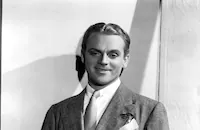
James Cagney

Joan Blondell

Ruby Keeler

Dick Powell
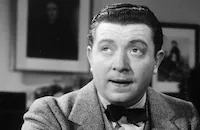
Frank Mchugh

Guy Kibbee
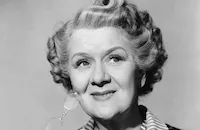
Ruth Donnelly

Hugh Herbert

Claire Dodd
Gordon Wescott
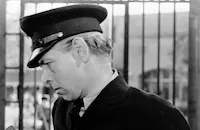
Arthur Hohl
Renee Whitney
Barbara Rogers
Paul Porcasi
Philip Faversham

Herman Bing
Juliet Ware
William Granger
Charles Wilson
Billy Taft
Pat Wing
George Chandler
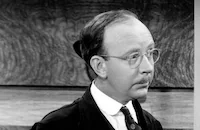
Hobart Cavanaugh
Sam Mcdaniel
Billy Barty
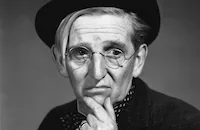
Jimmy Conlin

Dave O'brien
Harry Seymour
Fred Kelsey
Duke York
Crew
George Amy
Milo Anderson
George Barnes
Harry Barnhouse
Busby Berkeley
Walter Donaldson
Al Dubin
Sammy Fain
Oliver Garretson
Lewis Geib
Leo Green
Anton Grot
Gordon Hollingshead
Irving Kahal
Gus Kahn
Jack Kaufman
William Keighley
Robert Lord
Warren Lynch
Peter Milne
Jack Okey
Herbert Plems
Manuel Seff
James Seymour
Harry Warren
Charles Scott Welbourne

Photo Collections
Videos
Movie Clip






Trailer
Hosted Intro
Film Details
Technical Specs

Articles
Footlight Parade
As soon as he heard about the studio's plans to follow Berkeley's two smash musicals, Cagney campaigned for the role. After all, he reminded Warner, he had started out as a song-and-dance man and only blundered into gangster roles when he'd switched roles with the original star of The Public Enemy (1931). After Cagney reached film stardom, he continued to tap around the house after each day's shooting. In fact, visitors with dancing experience, like George Burns and Gracie Allen, were usually handed tap shoes and asked to join in.
Footlight Parade marked the third teaming for Dick Powell and Ruby Keeler, who had shot to stardom in the first two Berkeley musicals at Warners. It also marked a reunion for Cagney and Blondell, who had started at Warners together in 1930's Sinner's Holiday, which they had also done on Broadway. Footlight Parade was actually their sixth film together. Blondell had just married the film's cameraman, George Barnes, though that didn't guarantee her better camera angles; her natural beauty rarely came through on screen and always astonished fans lucky enough to meet her in the flesh.
A backstage story like 42nd Street, Footlight Parade saved most of its musical numbers for the film's finale. Before the finale, however, the movie is a fast-paced comedy about a Broadway producer who fights the inroads made by talking pictures during the Great Depression by staging extravagant "prologues" for movie theaters. Though she didn't get to sing or dance in the film, Blondell almost stole the picture as Cagney's secretary and love interest. When she kicks out a gold digger after his fortune, Blondell quips, "As long as they've got sidewalks, you've got a job." The line would be edited out in later years, when film censorship became more stringent, not to return until the picture's 1970 reissue.
After the simple plot was established, Footlight Parade focused on dancing, with three of Berkeley's best numbers back-to-back. First up was "Honeymoon Hotel," in which Powell and Keeler's efforts to enjoy their honeymoon in private are thwarted by relatives, well-wishers and a lecherous baby (Billy Barty) who almost shares their wedding night. The number was heavily cut by local censors.
Next came the 15-minute number, "By a Waterfall." Berkeley came up with the idea when someone asked him how he was going to top the numbers in Gold Diggers of 1933. When he suggested the first on-screen aquacade, Warner screamed "Stop right there! It will take the Bank of America to keep you going." But a few weeks later, he suggested that Berkeley try the number in Footlight Parade. The set, complete with an 80-by-40-foot swimming pool, took up an entire soundstage. Berkeley had the pool lined with glass walls and a glass floor so he could shoot the swimmers from every possible angle. Then he designed the swimming suits and bathing caps to create the illusion that the women were almost naked. He rehearsed the number for two weeks, then shot it in six days as technicians pumped 20,000 gallons of water a minute over the set's artificial falls. The results were so spectacular that the audience at the premiere gave the number a standing ovation and threw their programs in the air. Broadway impresario Billy Rose even tried to steal Berkeley from Warners to stage his aquacade.
For the finale, "Shanghai Lil," Cagney donned a sailor's suit and tap shoes to sing and dance the story of a sailor searching for his lost love in what most astute viewers realized was a brothel and opium den. When he finds her -- Ruby Keeler masquerading as a Chinese girl -- they joyously tap dance on the bar before getting caught in a full-scale brawl with 150 sailors and chorus girls. During the fight scene one chorus girl accidentally walked into a fist and ended up unconscious under one of the tables (the same dancer, years later, would marry MGM studio head Louis B. Mayer). Featured briefly in the sequence are a young John Garfield (five years before signing a Warners contract; he did extra work as a sailor briefly seen peeking over a barrel during the fight) and then-unknown chorus girls Ann Sothern and Dorothy Lamour. But the scene was Cagney's all the way. When the film opened, a reporter from the trade paper Variety located Max Tishman, an agent who had fired Cagney for demanding a raise during his song-and-dance days. When the reporter asked him what he thought of his former client, Tishman said he'd be happy to give Cagney the raise if he ever wanted to come back.
Producer: Robert Lord
Director: Lloyd Bacon
Screenplay: Manuel Seff, James Seymour
Cinematography: George Barnes
Art Direction: Anton Grot
Music: Leo F. Forbstein
Principal Cast: James Cagney (Chester Kent), Joan Blondell (Nan Prescott), Ruby Keeler (Bea Thorn), Dick Powell (Scotty Blair), Guy Kibbee (Silas Gould), Ruth Donnelly (Harriet Bowers Gould), Claire Dodd (Vivian Rich), Hugh Herbert (Charlie Bowers), Frank McHugh (Francis). BW-104m. Closed captioning.
by Frank Miller

Footlight Parade
James Cagney in Footlight Parade - One of 5 Features Showcased in THE BUSBY BERKELEY COLLECTION
The movie opens with Kent's real business, Broadway musicals, taking a hit with the arrival of talking pictures. The movie uses that late-1920s hit as a symbolic equivalent of the 1929 hit everyone took, the great depression, and gives the movie a familiar Warner ripped-from-the-headlines context. Kent's ability to roll with the punches and, through hard work and ingenuity, find another outlet for his skills was no doubt intended as a morale-booster for the public.
Even more appealing than the populist connection with the audience here is the general ethos exuded by Footlight Parade. Cagney's Kent is no desk jockey. He's a hard-working expert in his field who, when he wants to show his worry-wart dance director (comic relief Frank McHugh) a move, simply demonstrates it himself. He's not the sort of bean counter who might be in charge of, say, a studio today. In fact, any whiff of pretentiousness or self-importance is roundly mocked here, whether it's in a woman whose singing audition seems more suited for the opera (Cagney's and McHugh's characters trade snickers and eyerolls) or a golddigger who tries to pass herself off as "cultured" (Claire Dodd). Adding to the no-nonsense Warner feel is the presence of the irrepressible Joan Blondell as Kent's trusty, smitten and taken-for-granted secretary.
The plot of Footlight Parade has Kent working himself to the point of exhaustion to come up with ideas for prologues to keep his companies of singer and dancers on the road, and to beat a competing prologue agency that's been stealing his ideas. A big contract to provide prologues for a theater chain is up for grabs, and Kent and his crew (including Dick Powell and Ruby Keeler as his onstage stars) hurry to get three prologues ready to preview for the chain owner (Paul Porcasi) at three of his Manhattan theaters on the same Saturday night.
In a sense, the plot is just an excuse to get us to the performance of the three prologues. But the characters, performances and attitude are all so strong that the story never comes off as half-assed. When it comes time for those prologues, though, it's as if you've entered a different movie. Lloyd Bacon (42nd Street) gets credited as director for the movie with "Numbers Created and Directed by Busby Berkeley" (the DVD is available individually or as part of The Busby Berkeley Collection). The escapism and extravagance of Berkeley's production numbers are in full bloom in Footlight Parade. This flight of fantasy should have been detrimental to the hard-edged credibility of the first 75 minutes of the movie, since not only are the prologues more expansive than anything that could be staged in an old movie palace, but the changing visual perspectives of these sequences don't even try to make them seem like something being presented on proscenium stages (two even have brief moments of animation).
The prologues are so blatantly unconcerned with trying to fit in with the rest of the movie that to resist them for that reason seems silly. You just have to take them for what they are, and they're certainly more interesting as Berkeley showpieces than as continuations of the previous action. The first is "Honeymoon Hotel," which manages to be both risqué and cloyingly cute as Powell and Keeler play newlyweds checking into a hotel catering to sex-hungry couples. Next up is the most outrageous, "By a Waterfall," which gleefully indulges in Berkeley's knack for formations of lovely ladies and for imaginative camera placement. The last, "Shanghai Lil," has its own outrageousness as it segues from Far East romance to patriotic salute (complete with a mural of then-new president Franklin D. Roosevelt), and like me you may cringe at Keeler's pidgin English as the title character, but this one also gives us Cagney, the old hoofer, singing and dancing after Kent is pressed into service.
Despite its schizo nature, Footlight Parade is certainly a satisfying whole, and its jittery energy still comes across nearly 75 years after it was made. The new DVD includes a solid 15-minute featurette Footlight Parade: Music for the Decades that concentrates mainly on the efforts of Berkeley and of the men who wrote the songs for most of his musicals, Al Dubin and Harry Warren. There are also two 1930s WB cartoons built around songs from the movie and a couple of musical one-reelers. I can't imagine watching any of these extras more than once, through one of the one-reelers includes a song by Baby Rose Marie, 30 years before, as a grown-up, she was a regular on TV's The Dick Van Dyke Show.
For more information about Footlight Parade, visit Warner Video. To order Footlight Parade, go to TCM Shopping.
by Paul Sherman
James Cagney in Footlight Parade - One of 5 Features Showcased in THE BUSBY BERKELEY COLLECTION
Quotes
Sometimes I get the feeling you don't like anybody.- Chester Kent
If you only knew.- Nan Prescott
As long as there are sidewalks, you've got a job.- Nan Prescott
Listen, Nan, send a new boy and girl on right away, and make sure they're not in love with each other.- Chester Kent
Right.- Nan Prescott
Uh, get a couple already married.- Chester Kent
Is there, is there anything I can do?- Charlie Bowers
Yeah. See that window over there?- Chester Kent
Yeah.- Charlie Bowers
Take a running jump and I think you can make it.- Chester Kent
Aw, talking pictures, it's just a fad.- Chester Kent
You said you'd marry me and you're going to marry me!- Vivian Rich
Trivia
'Garfield, John' is often credited as being an extra in this film, 5 years before signing a Hollywood contract with Warner Brothers but researchers are in dispute over whether it is actually Garfield in the shot, which lasts 5/6 of one second onscreen.
In a 2003 documentary, "The John Garfield Story", actress Julie Garfield denied that her father, 'John Garfield' , is the sailor-extra he is often credited with being in the "Shanghai Lil" production number.
The film that Guy Kibbee takes James Cagney to see is _Telegraph Trial, The (1933)_ .
This film was selected to the National Film Registry, Library of Congress, in 1992.
Notes
Variety noted that the studio run by James Cagney's character is almost an exact replica of the Fanchon and Marco offices on Sunset Blvd. in Los Angeles, where similar prologues were produced. According to Motion Picture Daily, Dick Powell replaced Stanley Smith. Film Daily notes that Ruth Donnelly replaced Dorothy Tennant. Eugene Pallette, George Dobbs and Patricia Ellis were also considered for roles in the film, and Larry Ceballos was signed to direct dance numbers. Daily Variety reported that Larry Ceballos brought a lawsuit against Warner Bros. and Busby Berkeley for $100,000 because he was not given the chance to direct special dance numbers in the picture has per his original agreement with the studio. In addition, the studio gave Berkeley credit for a "mirror dance" which Ceballos claimed to have designed when Berkeley used the number in the Warner Bros. film Wonder Bar. According to modern sources, Cagney's character was patterned after Chester Hale, a well-known impressario of the times.
The movie that is playing at the theater visited by Cagney's character early in the story is the 1933 Warner Bros. film The Telegraph Trail, starring John Wayne, Marceline Day and Frank McHugh. In the "Shanghai Lil" number, the chorus creates an American flag which turns into a picture of President Franklyn Delano Roosevelt, then an eagle, the symbol of the National Recovery Administration, instituted as part of Roosevelt's "New Deal" program. Actor John Garfield, who is seen briefly in the "Shanghai Lil" number, made his motion picture debut in the film. Modern sources credit Robert Lord as supervisor and add additional cast credits: Marjean Rogers, Donna Mae Roberts, Dona La Barr, Marlo Dwyer (Chorus girls), William V. Mong (Auditor), Lee Moran (Mac, the dance director), Roger Gray (Sailor in "Shanghai Lil" number).

Miscellaneous Notes
Released in United States 1933
Released in United States March 1977
Selected in 1992 for inclusion in the Library of Congress' National Film Registry.
Released in United States March 1977 (Shown at FILMEX: Los Angeles International Film Exposition (The Mighty Musical Movie Marathon) March 9-27, 1977.)
Released in United States 1933
















